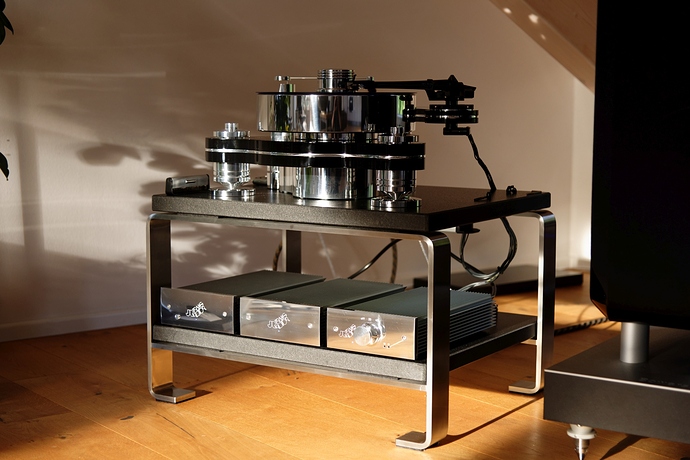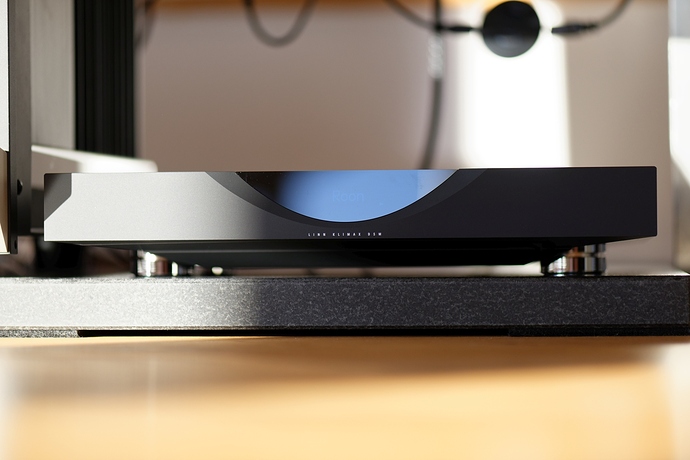I would like to approach from another side in this discussion.
Let’s imagine that we could hear the music without any clock problems, jitter errors, contaminated USB ports, switching power supplies or the like. With a device that, due to its design, knows none of these problems. And then we compare its music reproduction with that of a device that, due to its design, is fraught with all these problems and errors.
Furthermore, we do not use any of the digital sound enhancers advertised here or anywhere else to help. The digital playback device, which is therefore NOT tuned or improved with any aids in its sound, would have to sound significantly worse, since it suffers from all these problems.
My two comparison devices:
Device A
Record player: Transrotor Rondino Nero
Tonearm: SME 5009
Pickup: Transrotor Figaro
Phono preamplifier: Transrotor Phono 8.2 MC with XLR connector
Device B
Linn Klimax DSM
The Music:
I now put “Hummingbird” by Helge Lien & Knut Hem on the record player. This is an excellent recording. And it is also available to me in digital form, FLAC-files in 96 kHz 24-bit. My request for the label (Ozella) showed that the mastering of the record and the digital files is identical. Fortunately, the volume is almost identical, but I still fine-tune the two inputs on the volume on my amplifier. Thanks to Roon, I can play the digital recording (after some practice) simultaneously with the turntable. Now I only need to switch between the two devices on the remote control of the amplifier and can thus compare pure analog sound with digital sound.
I summarize my sound impressions:
First of all, I’m amazed at how good an antiquated technology can sound. No, not really, because I know my turntable and that’s exactly why I have it 
The next experience comes when I switch to the digital source. Because first you don’t realize that the streamer is playing. Both devices sound surprisingly similar at first. Only after repeated switching back and forth slight differences emerge. Depending on the track, the record player seems to have a tiny nuance more body. The highs can also be heard more succinctly. In return, the spatial representation of the Klimax is almost breathtaking, the music detaches itself even more from the speakers, it almost seems to float in the room. But be aware of what is being talked about here. These are tasty nuances in the detail area.
All in all, I can say that both devices sound excellent and that listening to music is really fun. Only after concentrated listening do slight differences become apparent and one can therefore conclude that they also sound different. But I would not presume to judge a “better” or “worse”. Both play at a level that is absolutely comparable.
Which, according to logical considerations, leads to the result that the digital playback of my streamer obviously does not need any of the propagated sound improvers. Perhaps one could even conclude that these so-called sound-deteriorating properties simply do not exist in the digital transmission chain. At least not in mine.
As always, that’s my personal perception. On my stereo, with my ears and my room.



